First things first—we’re doing it live!
🚨FREE OTHER MEN VIRUAL EVENT—APRIL 23 🚨
Join Other Men on April 23 for a virtual chat with Jason Bailey, author of Gandolfini: Jim, Tony, and the Life of a Legend. I’ll chat with Bailey about the legacy of Tony Soprano, his onscreen portrayal of fatherhood, Gandolfini's role in reevaluating masculine sex symbols, and a whole lot more. This event is online, it’s free, and we’ll be giving away copies of Bailey’s book to a few lucky attendees.
🎟️ RSVP HERE 🎟️
This week, we answer an audience question from the Are There Other Men Like Me? files.
Do you have a masculinity ask that needs to be answered? Fill out our form and I’ll answer your question here or on the podcast.
“Do straight men enjoy/crave physical affection from male friends? Non-sexual at all, I mean just longer hugs, touching arms, some patting just being physically close.”
-Crazy Blonde Spider-Man
Hi CBS-M,
You’ve prompted an ask that is one I’ve sat with for most of my adulthood, and it might be the most common theme in the stories from Other Men.
The short answer to your question is “yes.” There are caveats, though.
First, men's comfort with physical affection varies around the world.
As a child of a mixed culture, mixed generation family, the norms around male touch varied. However, due to a heavy Caribbean influence, physical affection often leaned towards "all in." This comfort and longing for masculine affection has become a shifting personal identity—my spouse recently reminded me when instructing "dame un besito" to a young family member that norms have shifted towards asking, not telling kids to give us kisses or hugs anymore—an old muscle that lingers from the viejos cariñosos in my family.
When it comes to the extremes of touch, I point to the Haman el Arees ritual in Palestine (after coming across the photo below in the Al Ameen Archive, we talked with its archivist Raya Manaa for the episode Some of My Best Friends Are Groomsmen).
The Palestinian tradition of male friends and family bathing a groom before his nuptials opened up conflicted feelings I hold as a man in this country. On one hand, I was very moved by the idea of this ritual—the male-to-male tenderness and nurturing on display—a response that I can almost categorize as a longing. On the other hand, I was very, “nah, I’d never”—but I’m really not so sure.
Back in the day, North America, particularly the United States, was super touchy between men. You can look at the fantastic archive of historians like John Ibsen, who have collected photographic evidence of physical affection between men in the late 19th/early 20th century.
As society modernized, male friendship changed. In traditional, close-knit communities, proximity and stability helped relationships flourish. However, industrialization brought mobility and wage labor, limiting time and autonomy for connection. As women gained more economic and political presence, old social dynamics shifted, and men had to renegotiate their roles—and their friendships—within a rapidly changing world. This shift was influenced by early 1900s perceptions of male intimacy and mid-century homophobia, leading to a decline in behaviors like hugging and hand-holding among men. Arguably, men “no longer” wanted to touch each other.
Along with these cultural shifts, how men touch each other gets complicated when you factor in class, race, and environment. Middle-class men can more freely claim comfort with physical affection—where intimacy can often appear charming or evolved. But for young men growing up in areas marked by scarcity, physical intimacy carries higher stakes. In these spaces, physical touch isn’t just about bonding—it can signal dominance or survival. I’d argue that initiations in street gangs or groups like the Proud Boys aren’t just about proving loyalty—they offer a warped version of fraternity, a way to access physical closeness under the guise of aggression.
So, CBS-M, why is my answer an assured yes, but with caveats?
Because we have rules.
Traditionally, the more segregated the spaces are between genders, the freer the expressions of affection are between men. In many Middle Eastern and Muslim-majority countries, public displays of affection between men, such as hand-holding, embraces, and cheek kisses, are common and signify friendship without romantic implications, with some of these behaviors are deeply rooted in cultural and religious traditions that emphasize unity and fraternity among men.
However, there are sanctioned spaces where the need for physical touch is more freely expressed among North American men—spaces where the usual rules of masculinity are either suspended or redefined.
Need a hug? Park yourself in one of these spaces:
In wartime, soldiers can form intense bonds beyond "situational intimacy." For sure, shared trauma and fear can prompt a need for physical comfort, but the highly charged (and historically segregated) sphere of the military removes the threat of queer panic, where these liminal spaces make tenderness between men acceptable and necessary.
While often sites of performative masculinity, sports teams can paradoxically be some of the most touch-friendly environments for men. You’ve got your butt slaps, celebratory pile-ons, shoulder grabs, and arms slung around each other after wins (or losses). Physical affection becomes coded as team spirit—not emotional vulnerability in the heat of competition or camaraderie.
I have Google Alerts for “men embrace” and “men hug.” On the rare occasions when I receive a search result, an article surfaces where the embrace stems from some tragedy. In moments of loss, illness, or grief, even men socialized to avoid affection often soften. In hospice care and funerals, men usually set aside stoicism for physical presence—sometimes for the first time in their adult lives.
I realize your question addresses straight men, but even straight-identifying men often find themselves more open in queer communities that prioritize emotional intimacy and vulnerability. Several years ago, I spoke with writer Mark Greene, who confided that his early days in New York were spent in gay bars, not to pick up men, but to feel unencumbered by the emotional and physical restrictions he felt in traditionally “straight” spaces. I, too, felt an expansive sense of masculinity when, as a teenager, I encountered the predominantly queer spaces of late 90s club culture in Baltimore and Washington, D.C.—perhaps echoing the eureka moments of other men when they discover how natural it feels to hug, cry, and sit close.
Honestly, it seems like it wouldn’t hurt for more of us to spend time with these two pals!
But, here’s the hopeful answer to your question, CBS-M—recent trends indicate a reversal to these limits on masculine touch.
Younger generations increasingly embrace such behaviors as normal, exemplified by the rise of the "bro hug."
More men are leaning into formal versions of resocializing, like men's emotional development groups, therapy, and online resources, where physical affection becomes a tool for healing. These groups—often framed around storytelling, archetypes, and emotional expression—encourage embraces, eye contact, and physical presence to create safety and connection.
Deep down, we straight men do want it. We need to get out of our way.
If you want to encourage more physical affection between men, here's one piece of advice: stop calling it a "bromance." The term exoticizes a very normal human need for closeness and touch, often cloaking it in a layer of homophobia—like male intimacy has to be made quirky, cute, or suspect to be understood. Also, when we notice what you think is "cute" and "disarming" about us straight men, well, some of us have learned to adapt that language as a "hey girl" calling card; "Yeah, my buddy and I hug all the time—it's like a total bromance. I even cried during The Notebook. I'm just super in touch with my feelings. So...what are you doing later?"
I’d love some thoughts from our audience—are there any straight men out there that actively solicit physical affection from male friend? Or try to run from it entirely? Respond in the comments or email and I’ll share your answers next week.
Adios, ciao ciao, byeeeeeeeee,
Mark✌🏼
Liked what you read? Click Share and/or the ❤️ button! It helps more people find Other Men and is a swell way to show your support.





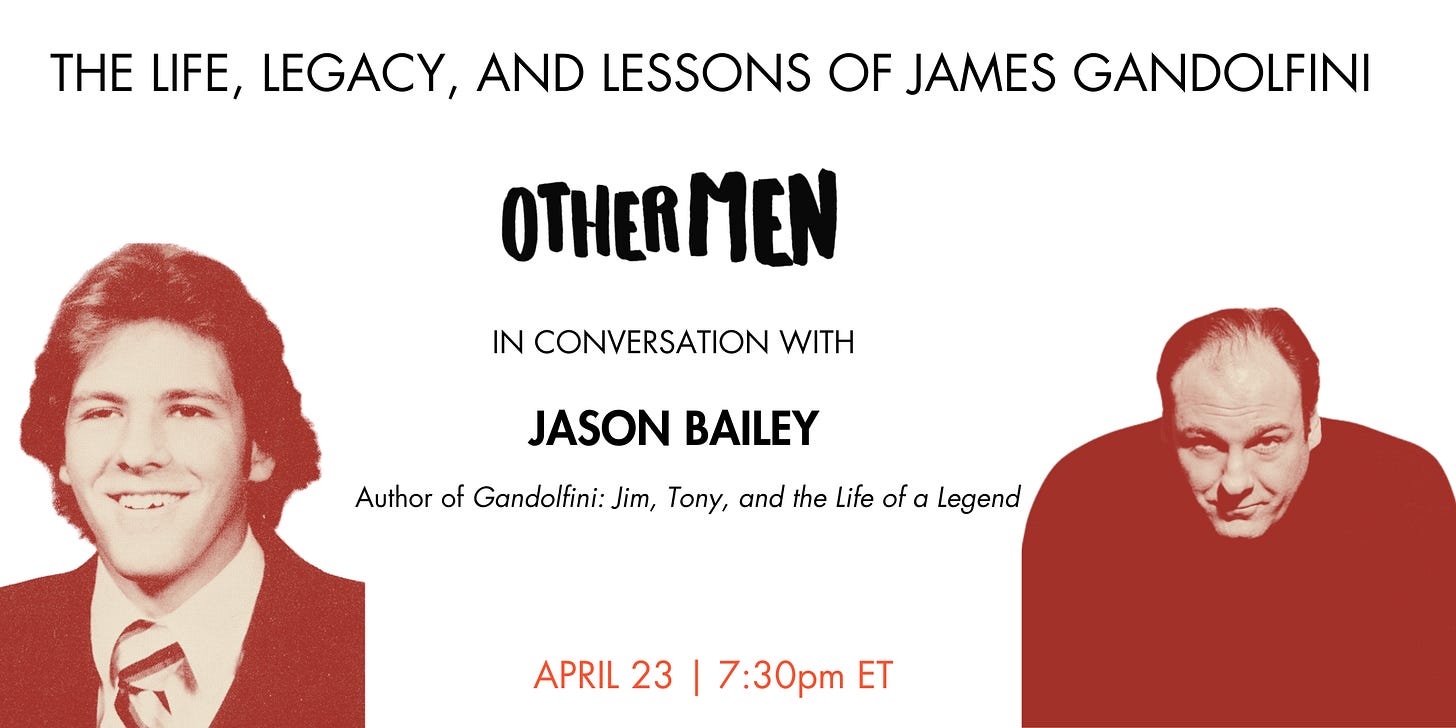
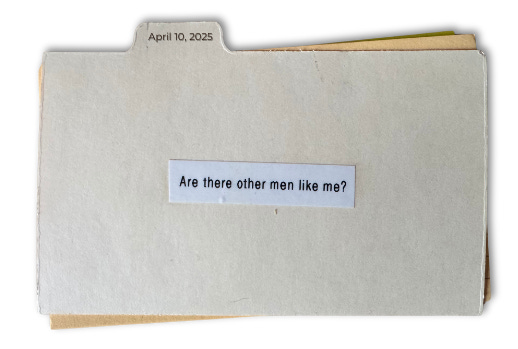
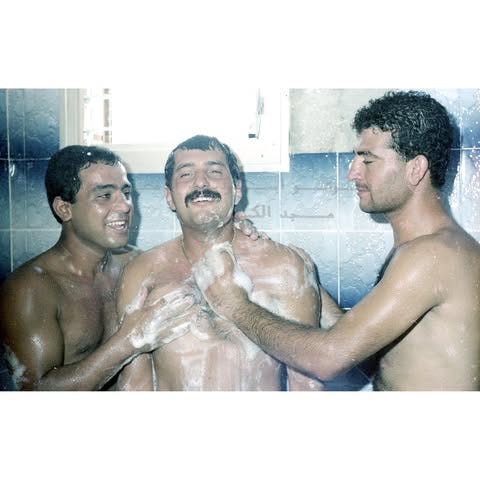

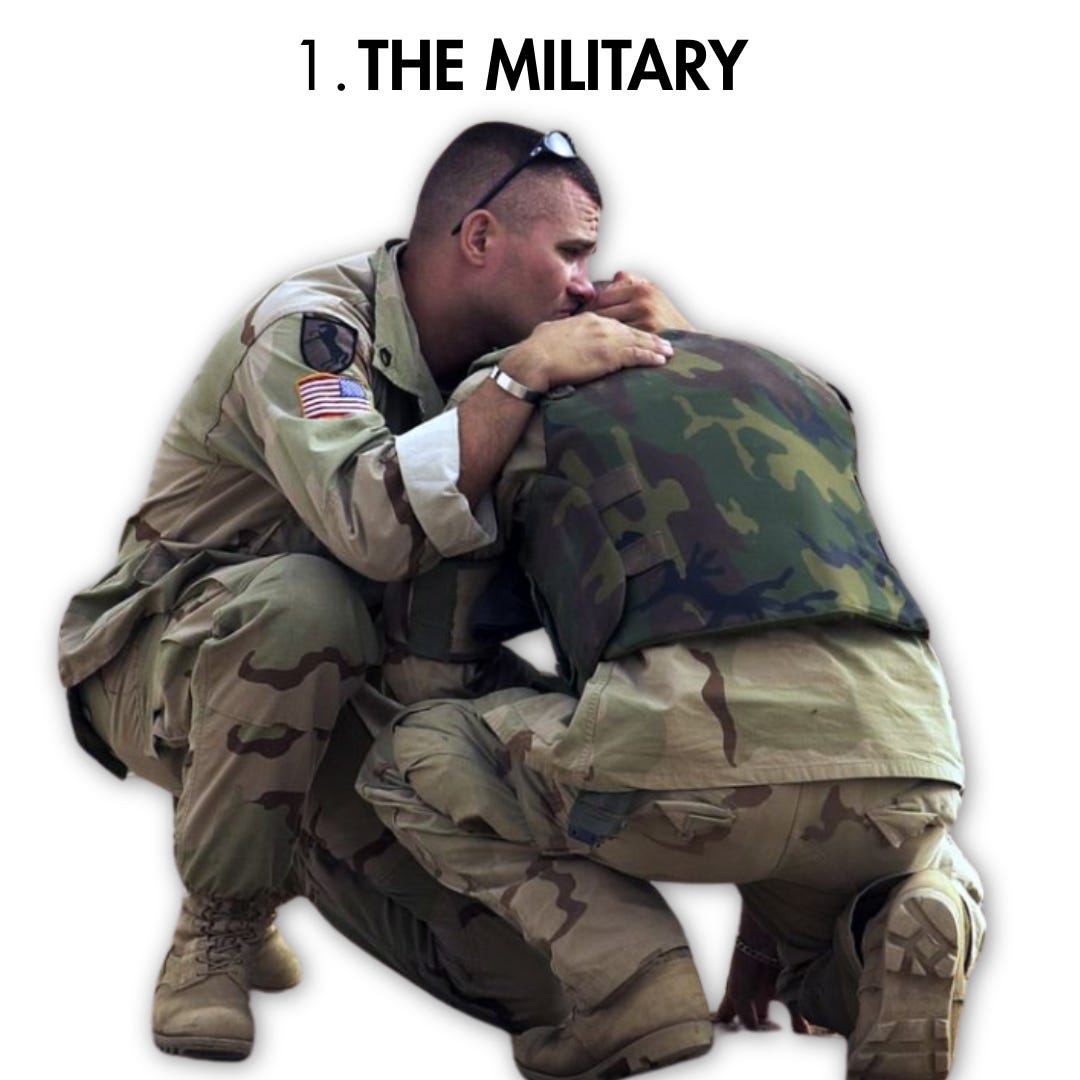
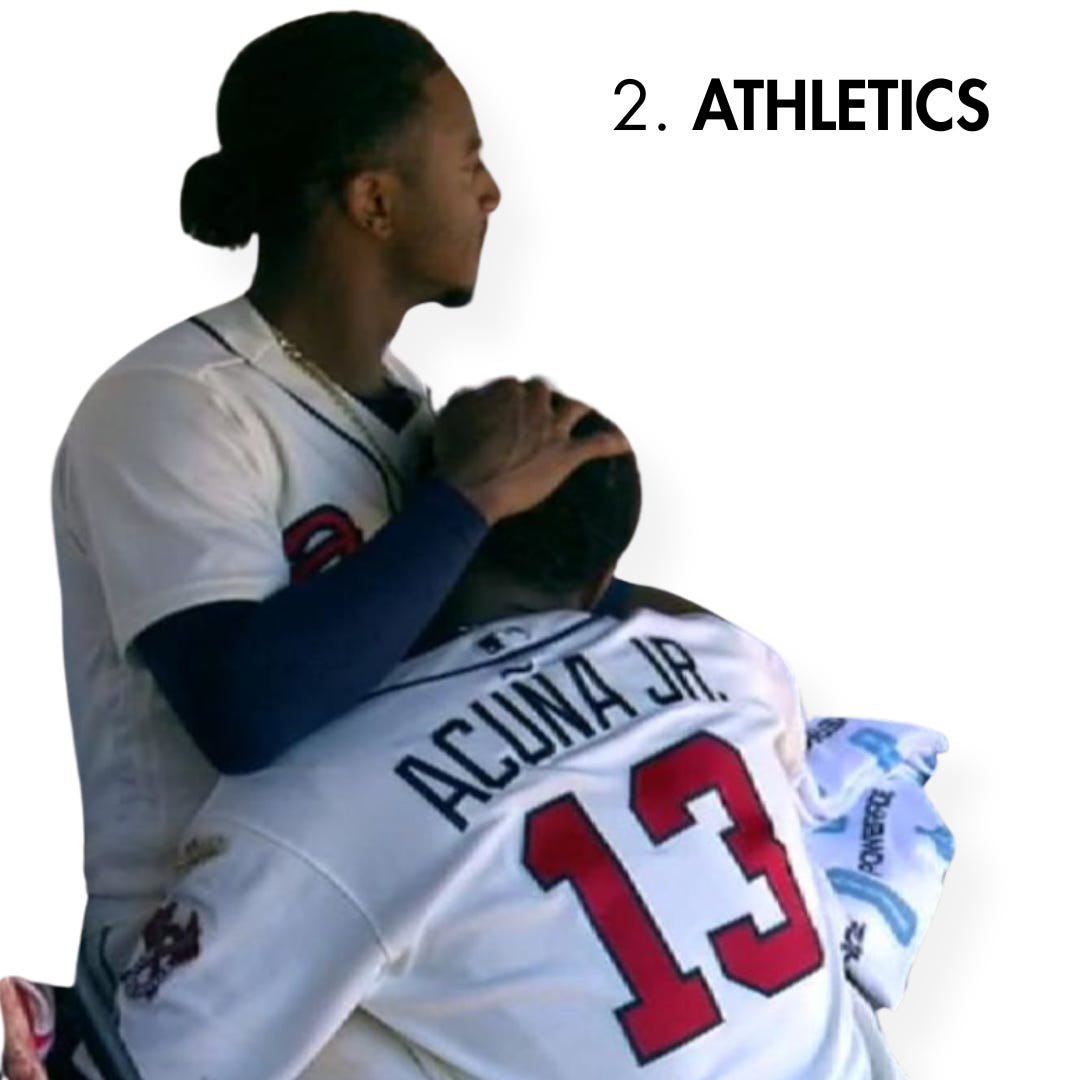
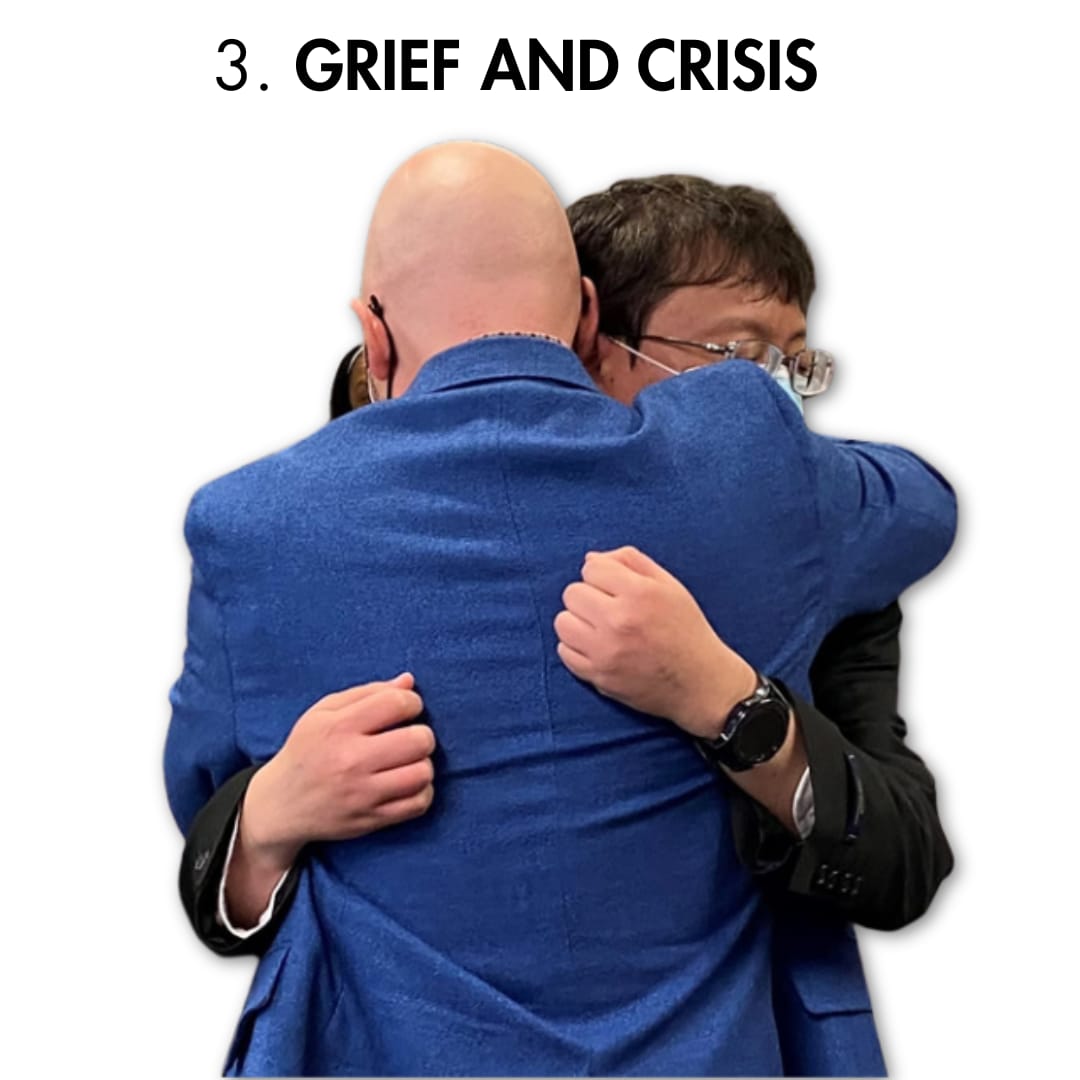
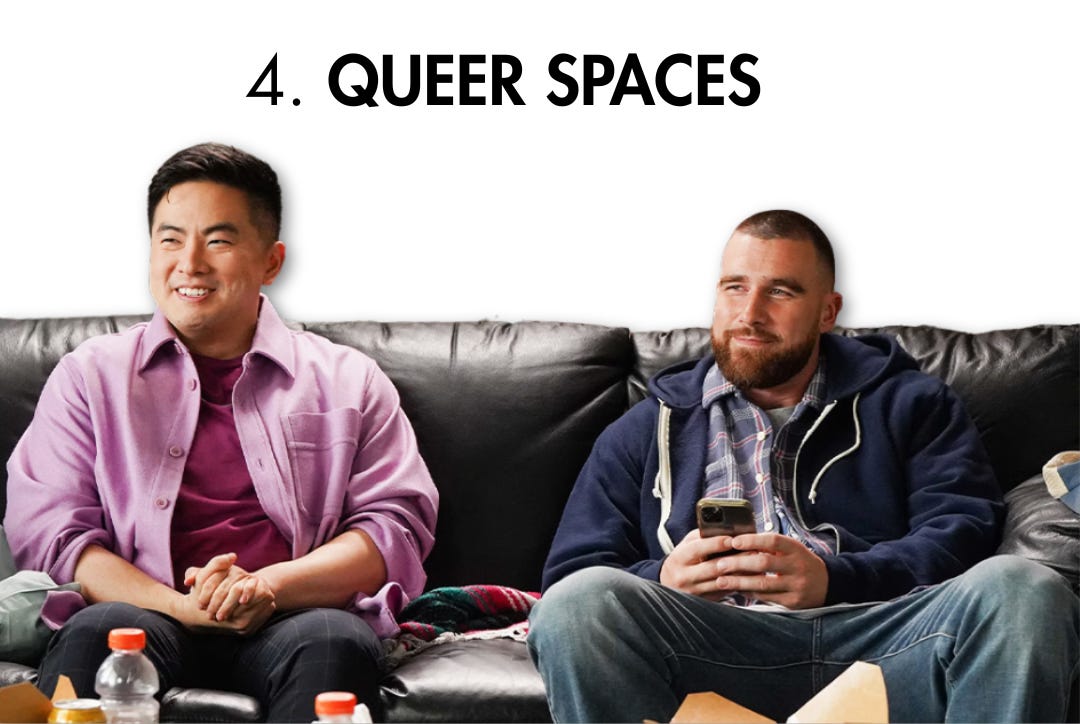
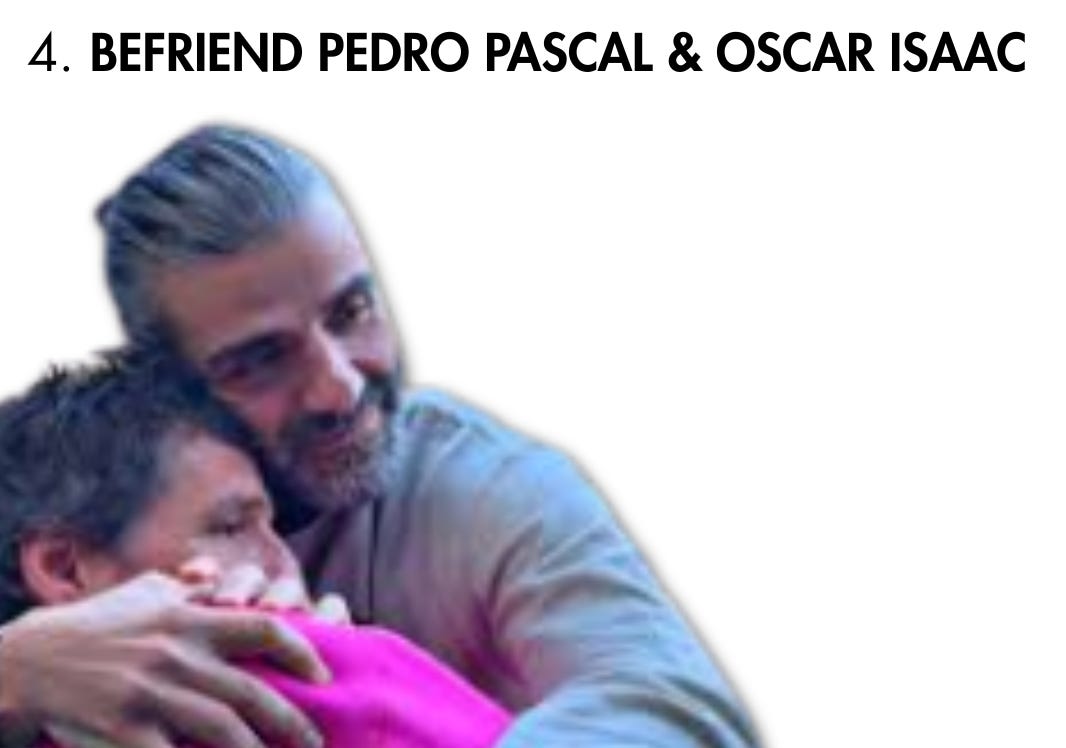
You know me, I'm a big hugger. I've got one for anyone that wants it. Never had any hang-ups about it, even when other guys would insist that I should. In my mind, if we're too squeamish to so much as embrace each other, then all we're doing is defining masculinity by fear, distrust, denial and repression. There's enough alienating forces in this world already without imposing it on oneself.
Thank you for this exploration, Mark. As a fifty-year-old man who seems to have lost touch with the younger, more huggy version of himself, I love these types of reminders. You're speaking to the parts of me I would like to unfold more.